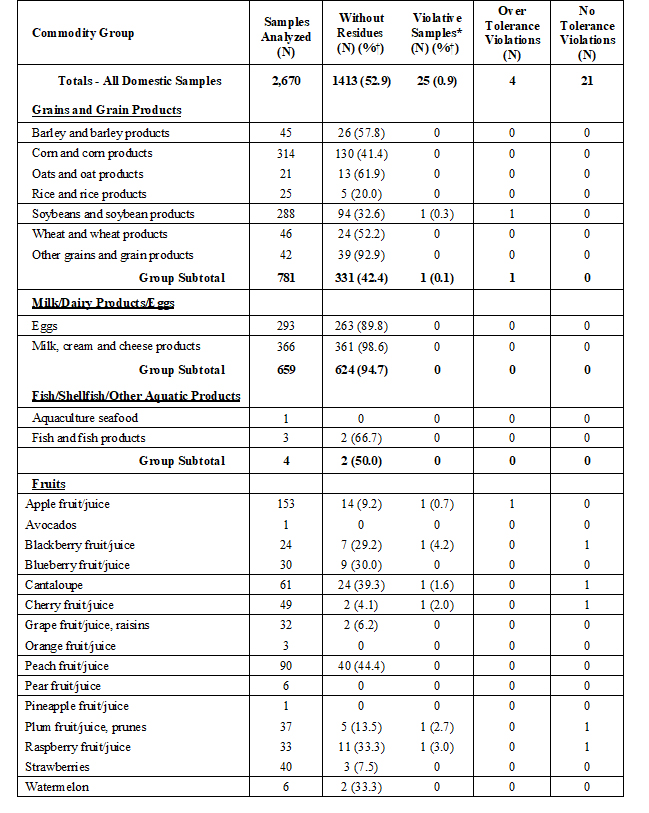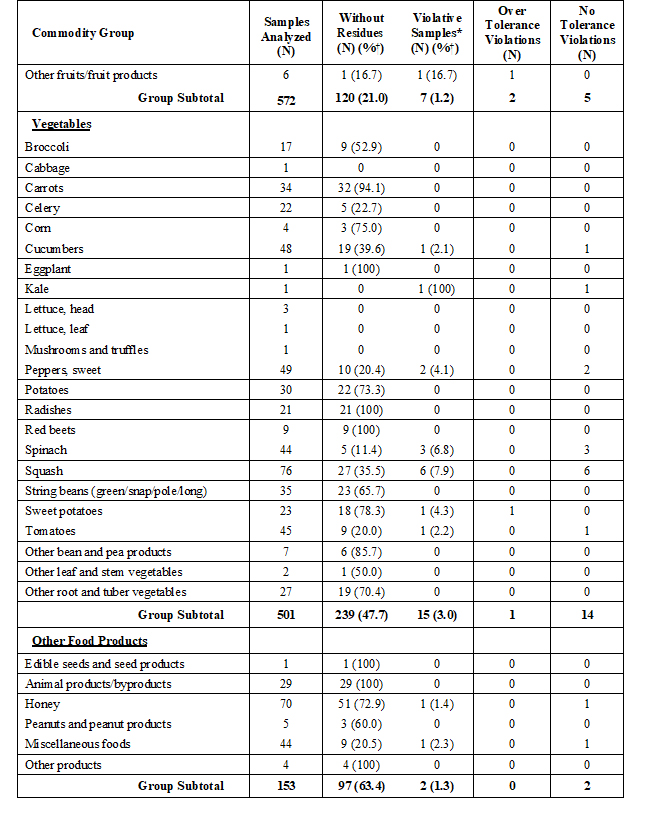You've heard it or read it, no doubt. Conventionally raised food is drenched in pesticides. Or doused. Or some other scary, inflammatory word that instills fear in you. (Read what ag scientist Steve Savage says about the use of inflammatory words to scare people.)
It’s just not true.
In fact, a new report released by the Food and Drug Administration shows that “levels of pesticide residues in the U.S. food supply are well below established safety standards.”
FDA has been monitoring pesticide residue since 1987. Check out this page to read all the past reports and data files.
The most recent report, issued on Oct. 1, can be found in FDA’s FY 2016 Pesticide Residue Monitoring Program.
The Executive Summary of the document indicates that, between October 1, 2015 and September 30, 2016, FDA analyzed 7,413 samples in its regulatory monitory program: 6,946 human foods and 467 animal foods.
Interestingly, imported human food typically contains more violations when sampled, so FDA tests more imported than domestic commodities. In the most recent study, 4,276 imported and 2,670 domestic samples were tested. Of the 2,670 domestic samples tested, 99% fell within federal standards. Ninety percent of the 4,276 imported samples fell within the standards.
In addition to the yearly pesticide residue report, FDA also carries out focused sampling surveys for specific commodities and monitors pesticide chemical residues in food prepared for consumption in its Total Diet Study monitoring program. While the Pesticide Residue Monitoring Program predominantly tests for resident in raw commodities, the TDS monitors foods that are table-ready. In the report, FDA noted, “depending on the TDS food, the sample may be washed, peeled, and/or cooked before analysis.”
In addition, the TDS foods are analyzed at levels 10-100 times lower than the regulatory monitory program.
Analysis of 1,062 samples in the 2016 TDS program found that no foods contained violative pesticide levels. While residues of 155 different pesticides were found in TDS foods, 87% were below .01 parts per million and only 2% were above .1 part per million.
To put that in perspective, 1 part per million (with no zeroes or decimal points in front of it!) is like 1 second in 11½ days. Watch this TedEd “How to Visualize One Part Per Million” video to learn more.
The table from the FDA reports goes into detail about the crops checked and levels found in the 2016 study.


Biggest takeaway? You don't need to fear your food. Conventionally raised food is safe.
